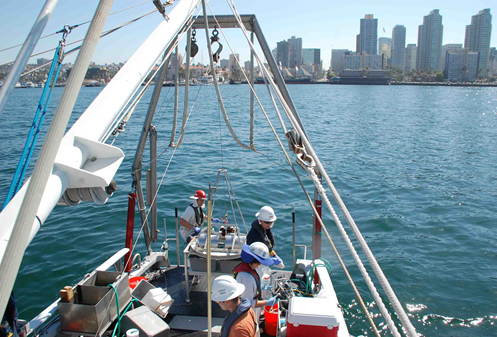Bight ’18 kicks off with five study elements
Participants of the Southern California Bight Regional Monitoring Program have developed five main study elements for the program’s 2018 cycle that will explore different facets of how human activities have impacted the ecological health of the region’s coastal waters.
The regional marine monitoring collaborative, known as Bight ’18, kicked off in fall 2017 at SCCWRP and includes participation by about 100 environmental organizations. The five study elements will be:
» Sediment Quality, which will examine the ecosystem impacts of sediment contamination across time and space, including via assessments of contamination in seafood.
» Ocean Acidification, which will track corrosive conditions in coastal waters across time and space, as well as examine whether larval fish and other species sensitive to ocean acidification are experiencing biological impacts.
» Harmful Algal Blooms, which will track how long domoic acid created during bloom events

lingers in seafloor sediment, as well as whether cyanotoxins from land-based blooms are being washed into coastal waters.
» Trash, which will track the extent to which trash has spread across aquatic environments on land and at sea, and the types and abundance of trash in these settings.
» Microbiology, which will explore the utility of adapting coliphage viruses as an indicator of microbial contamination.
Field sampling will begin this summer. Program participants already have created robust study designs for each element, and have begun developing quality-assurance exercises, including laboratory intercalibration studies, to ensure all data collected are comparable and of high quality.
The Southern California Bight Regional Monitoring Program, which has been
facilitated by SCCWRP since its inception in 1994, mobilizes Southern California environmental management agencies to collect data from across a much greater expanse than just their local discharge zones. Both regulated and regulatory agencies, as well as non-governmental and academic organizations, come together to collaboratively design the study and interpret findings.
Southern California’s environmental management community relies on the Bight program to better direct resources and to maintain focus on the areas and issues that are disproportionately impacted by human activities.
More news related to: Regional Monitoring